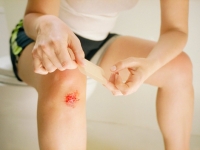Sensitive teeth: disease or feature?
 The problem of dental hyperesthesia – their hypersensitivity is disturbed by more than 30% of people applying to dentists. In some people, tooth enamel reacts to cold or heat, in others, teeth react to sour or salty foods, and in others, to any irritant, including brushing your teeth. Hypersensitive tooth enamel significantly impairs the quality of life. Is it possible to do something about it and why does tooth hyperesthesia occur – let’s understand.
The problem of dental hyperesthesia – their hypersensitivity is disturbed by more than 30% of people applying to dentists. In some people, tooth enamel reacts to cold or heat, in others, teeth react to sour or salty foods, and in others, to any irritant, including brushing your teeth. Hypersensitive tooth enamel significantly impairs the quality of life. Is it possible to do something about it and why does tooth hyperesthesia occur – let’s understand.
Tooth enamel hypersthesia: what happens
Dentists say that the pain reaction and discomfort when exposed to teeth of high and low temperatures, chemical and mechanical stimuli, etc. often occurs with caries, periodontal disease (inflammatory process in the gums with damage to periodontal tissues), damage to the tooth enamel. But often a person experiences discomfort or even pain without visible damage to the enamel or dentin and the absence of caries.
Under the influence of a number of factors, the tooth enamel becomes thinner, and the dentin (dentin is the bone substance of the tooth) becomes bare. These tubules lead to the dental nerve and the pulp of the tooth. Pulp, loose tissue, which is filled with the weed of a tooth, has many vessels and nerve endings. Therefore, even a small touch of a tooth “exposed” in this way to objects (toothbrush, mug) causes discomfort. And if it is hot or cold food, sour foods, etc. – then even a sharp pain.
Why enamel is damaged and teeth hyperesthesia occurs
One of the main reasons for the development of tooth sensitivity is caries, inflammatory processes in the pulp and dental nerve. Sometimes pulpitis (inflammation of the pulp) can pass as a whole, not damaged by caries or a sealed tooth: the infection gets through the microcracks in the enamel, invisible to the human eye. A person does not necessarily experience acute pain, he may feel discomfort or a feeling of light bursting in the jaw, plus increased tooth sensitivity. Therefore, dentists strongly recommend to undergo prophylactic examinations 2 times a year (every six months) in order to promptly detect dental diseases and successfully treat them. Also lead to hypersthesia:
Malnutrition in the body when there is a shortage of important vitamins and minerals
The frequent use of sweet soda, sour foods, sweets, etc., which leads to the destruction of the protective layer
The use of brushes with stiff bristles, abrasive pastes, independent attempts to whiten teeth at home – cleaning them with soda, citric acid and other substances aggressive to tooth enamel
Ignoring dental visits and treatment for toothache, gum inflammation, etc.
Treatment and prevention of dental hypersthesia
Increased tooth sensitivity is not a feature of tooth enamel, it is a dental disease. It is possible and necessary to correct the situation, but we cannot do without consulting with a doctor, after all, it is necessary to confirm or exclude caries, pulpitis, etc., to choose a toothpaste suitable for dental care, a brush. Sensitive teeth, until the problem is corrected, should be cleaned with a special gentle paste – whitening in this case can not be used at all!
The specialist will tell you which paste will fill the dentinal tubules and will help reduce the sensitivity of the teeth while you are undergoing treatment. It is important to pay attention to nutrition, eat foods rich in phosphorus, calcium, vitamins A and other substances necessary for healthy teeth. Do not forget to also brush your teeth regularly (it is especially harmful to skip brushing your teeth before bedtime), use dental floss and remove tartar in a timely manner.



